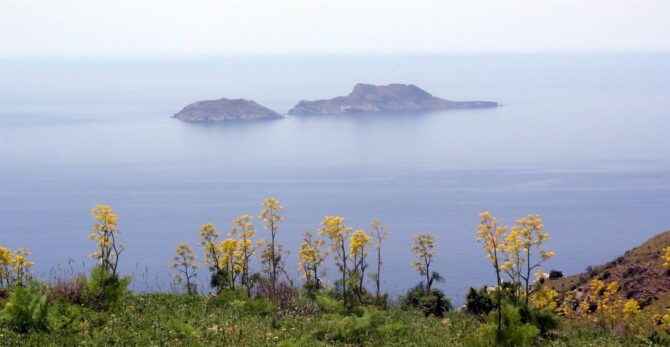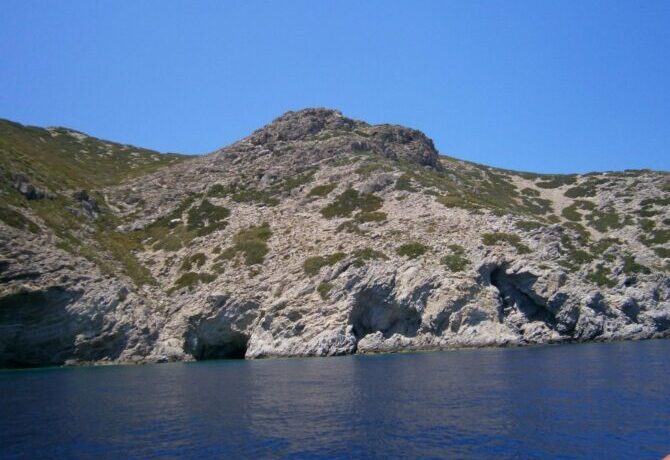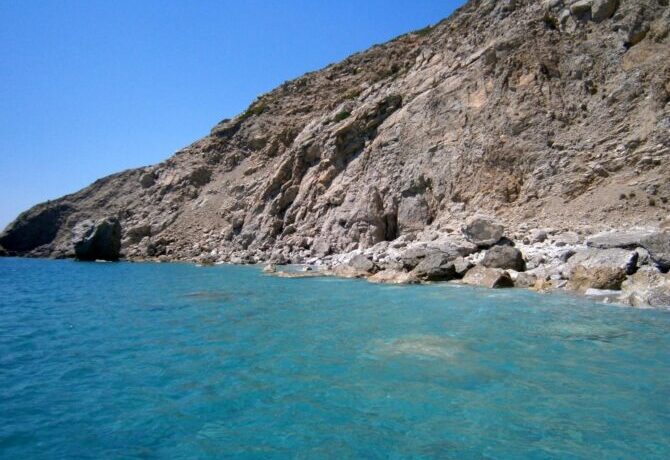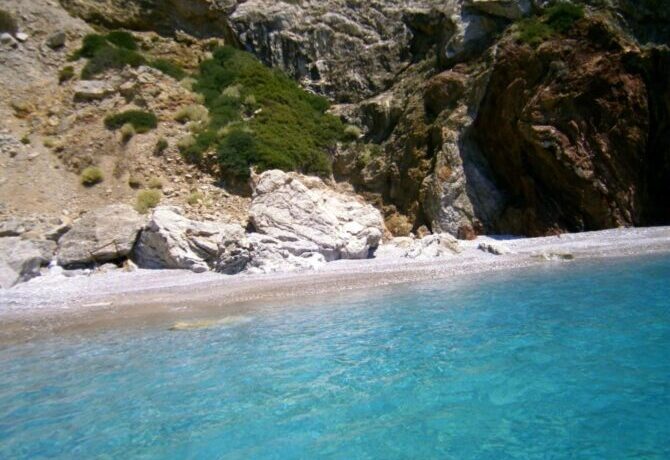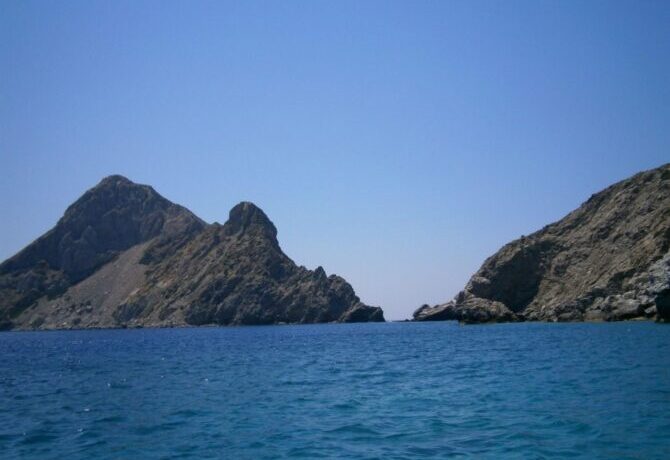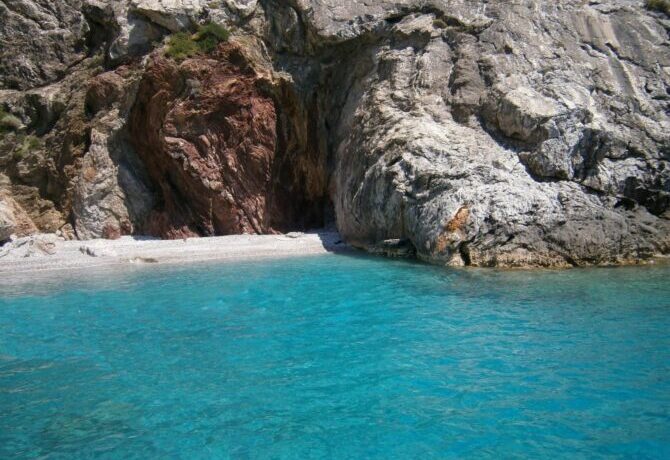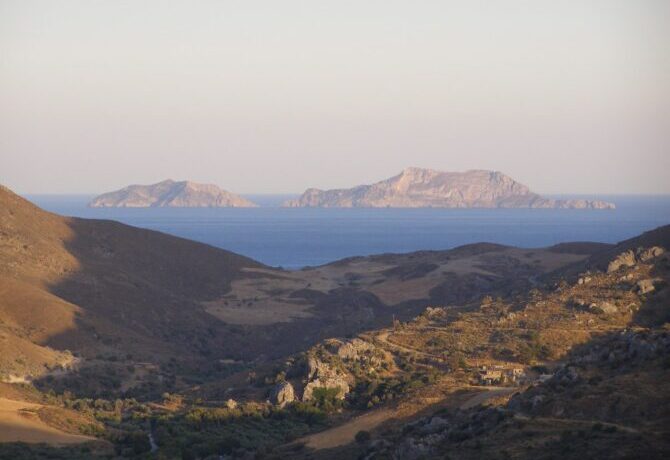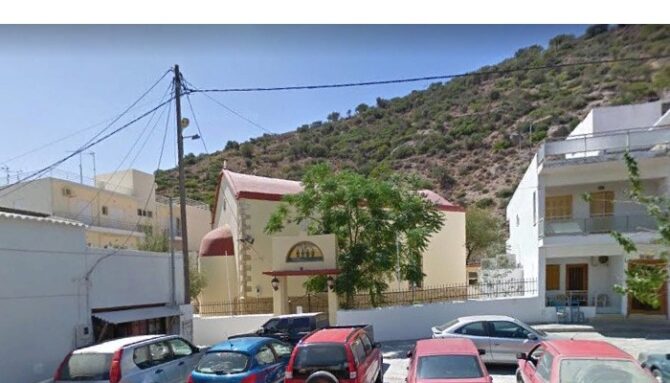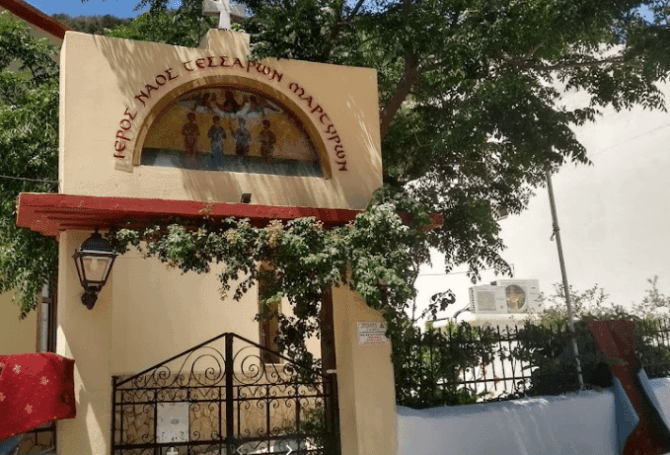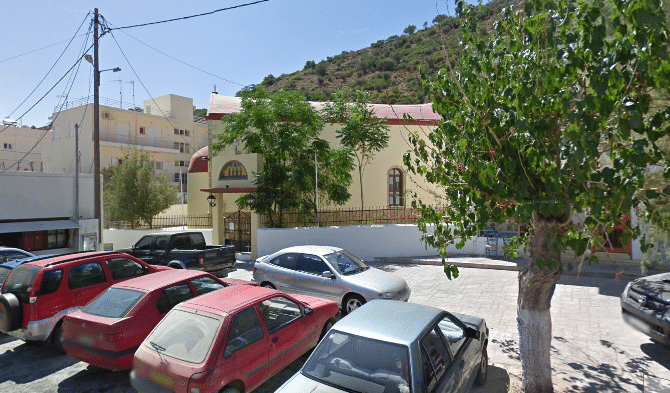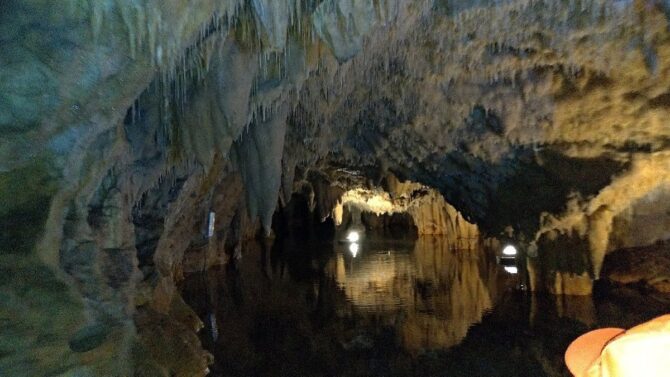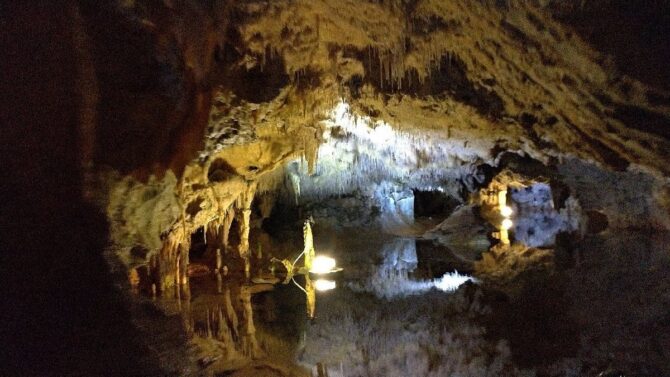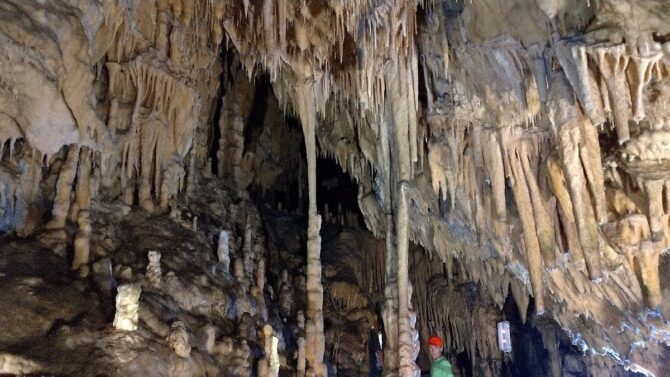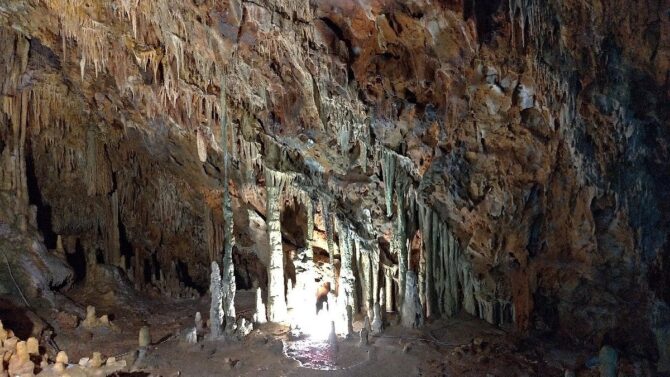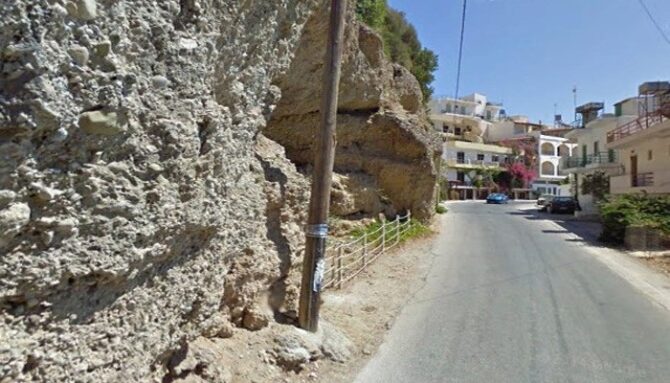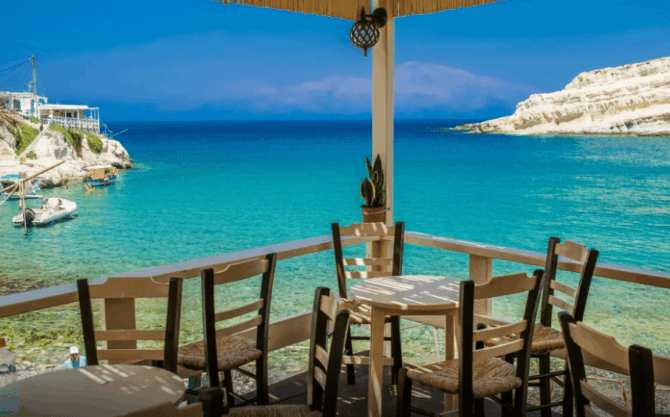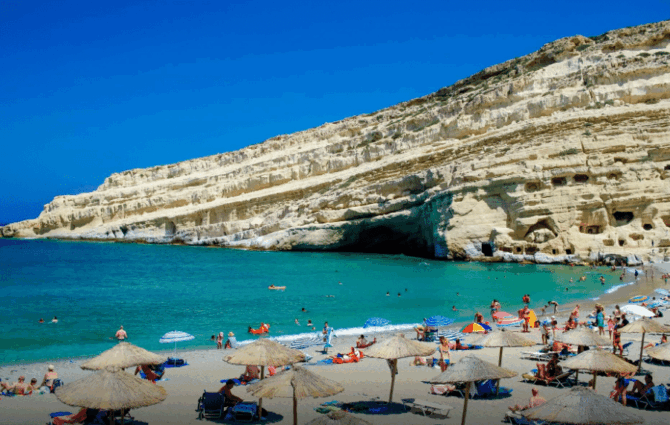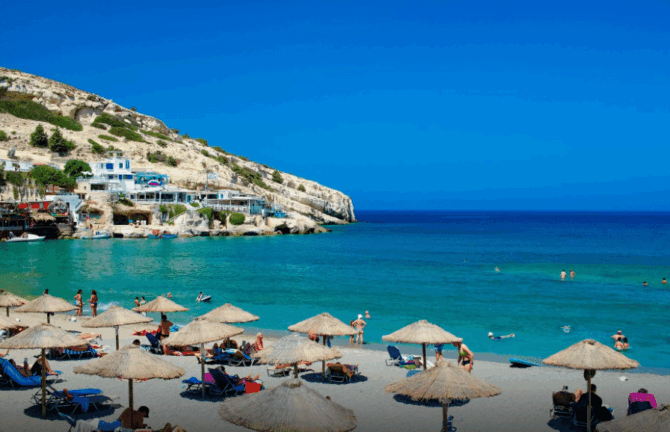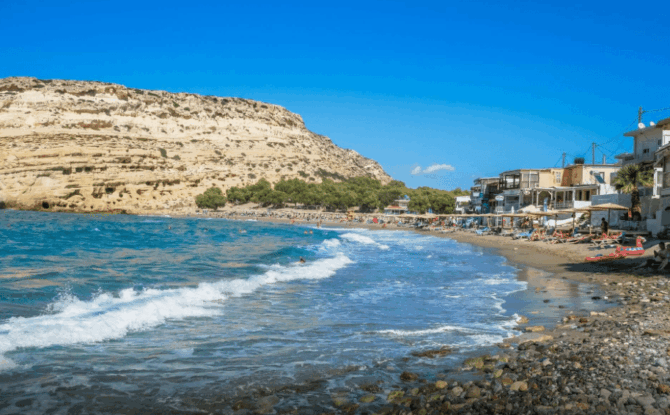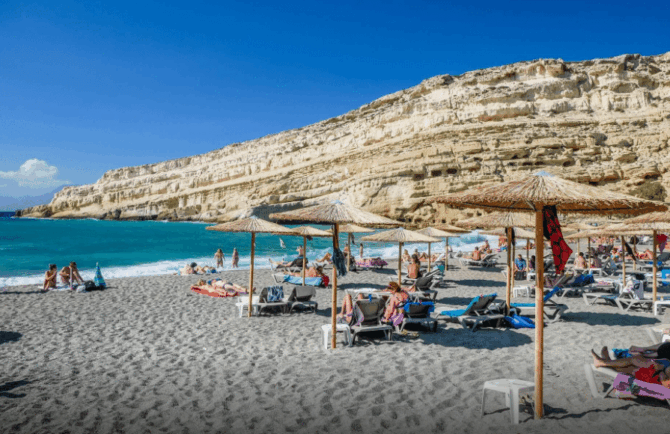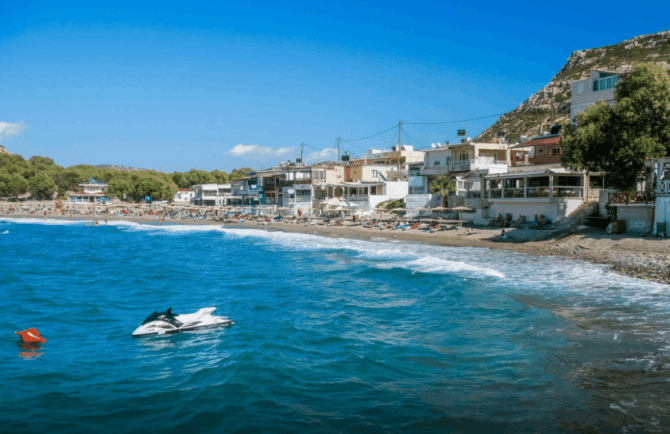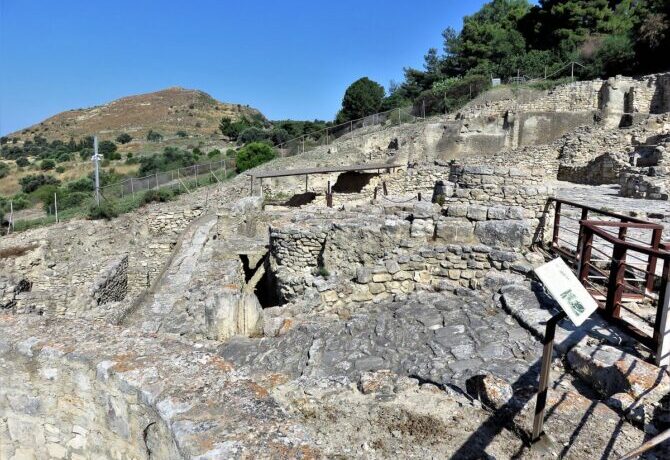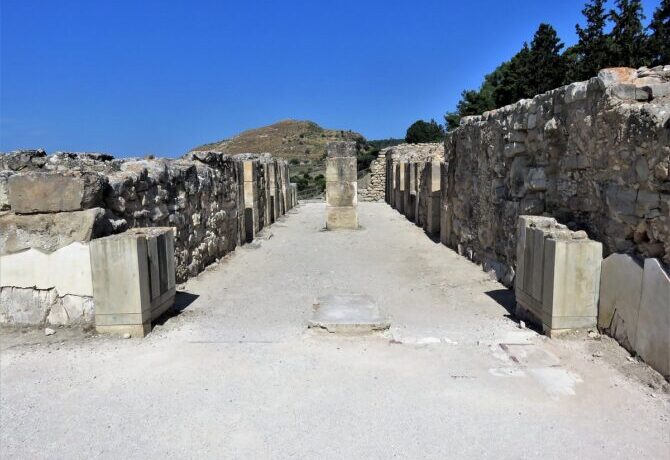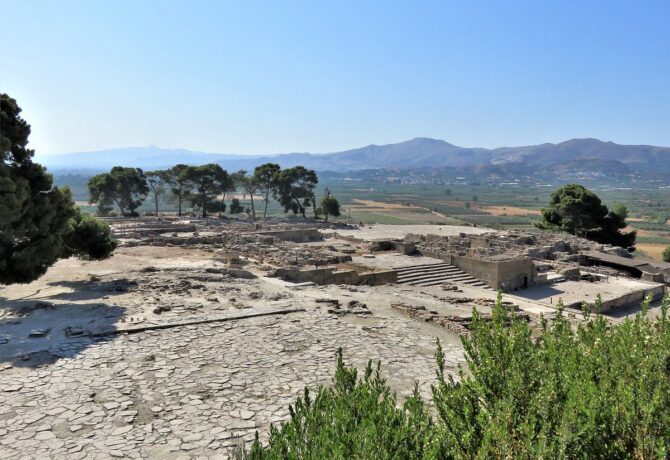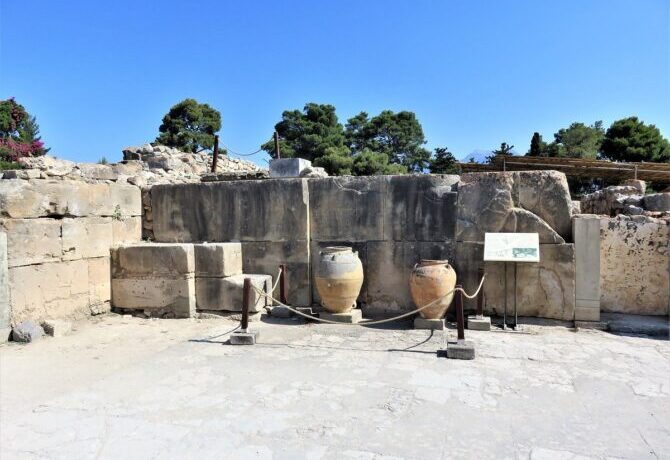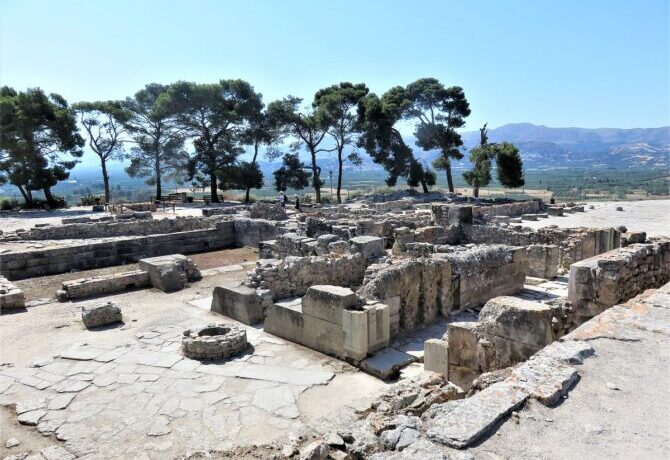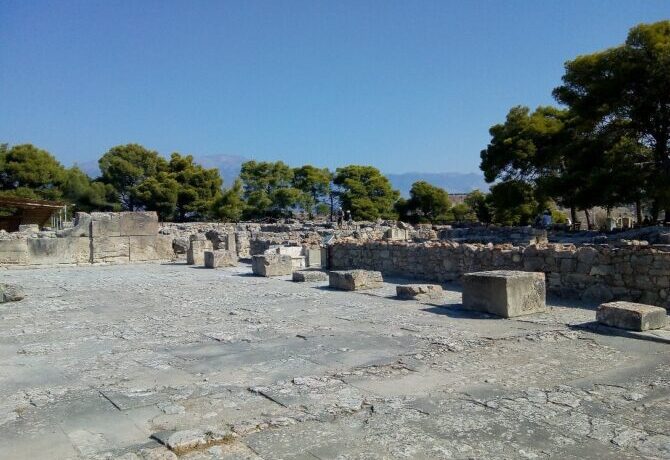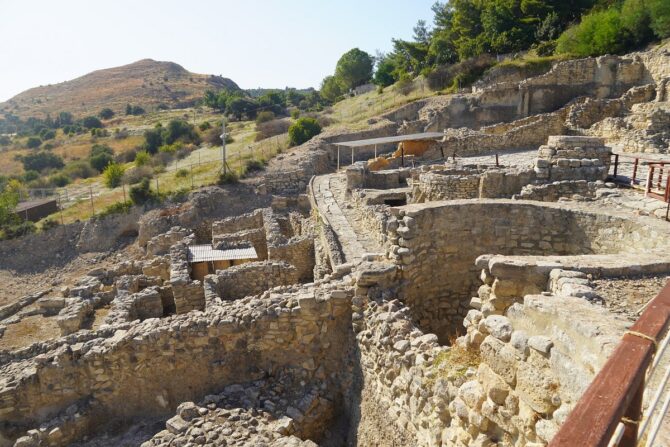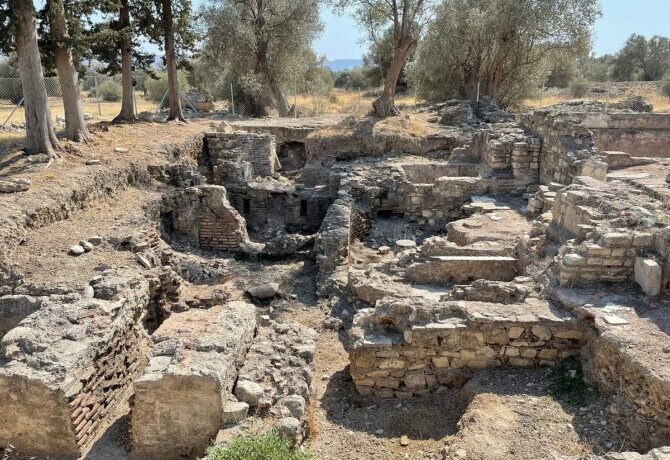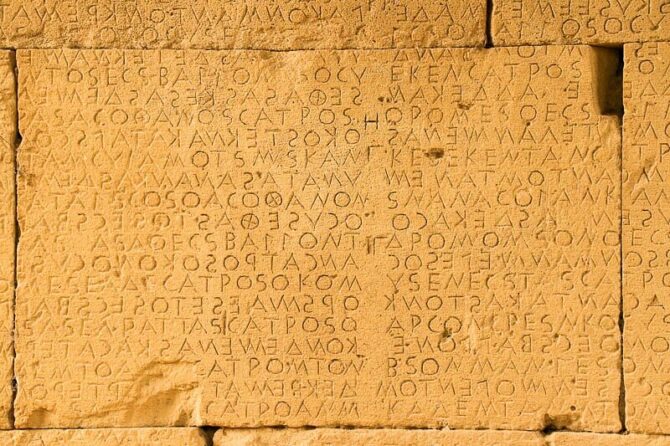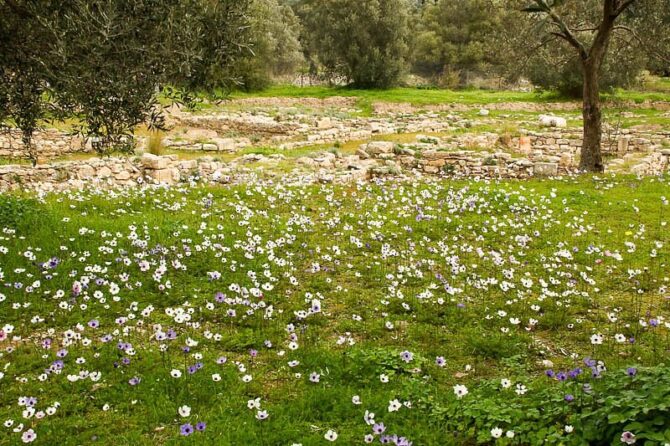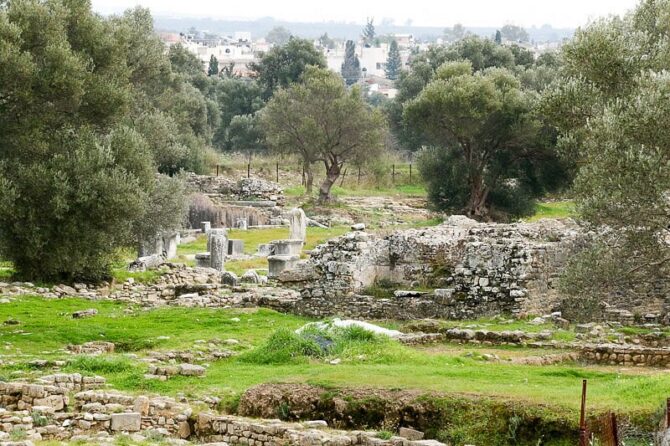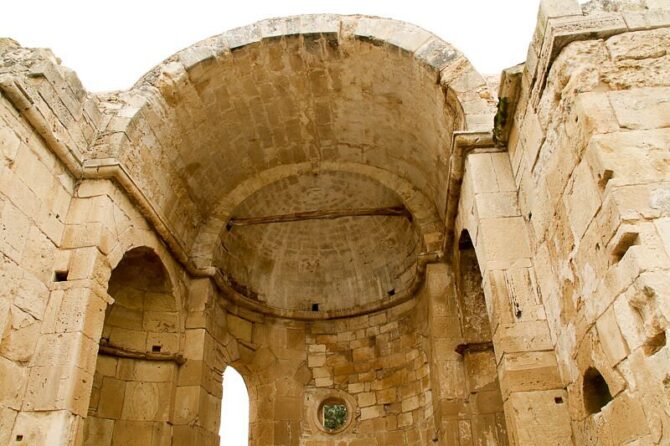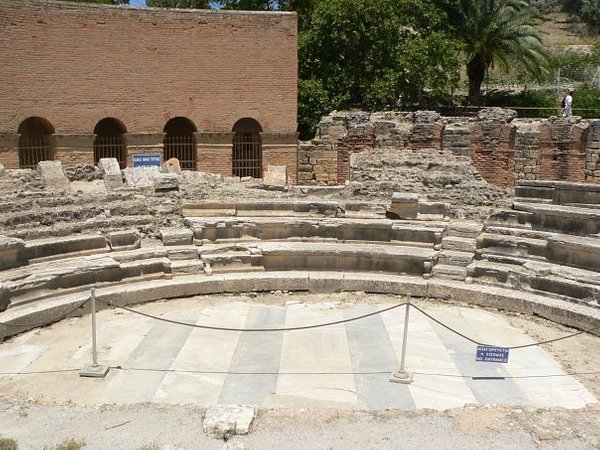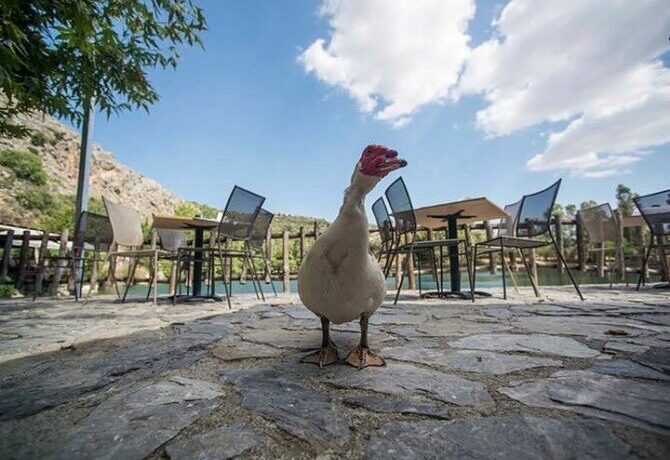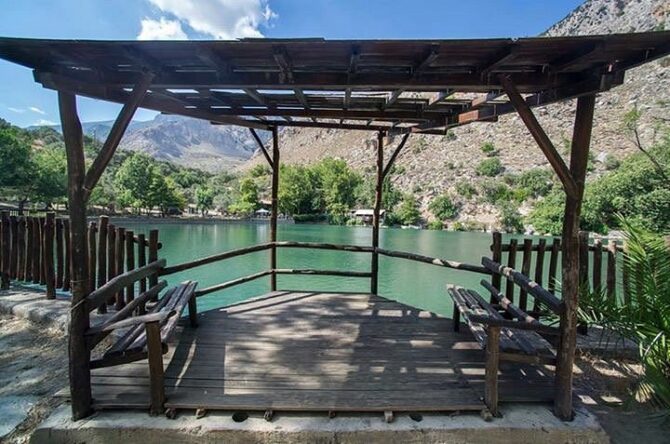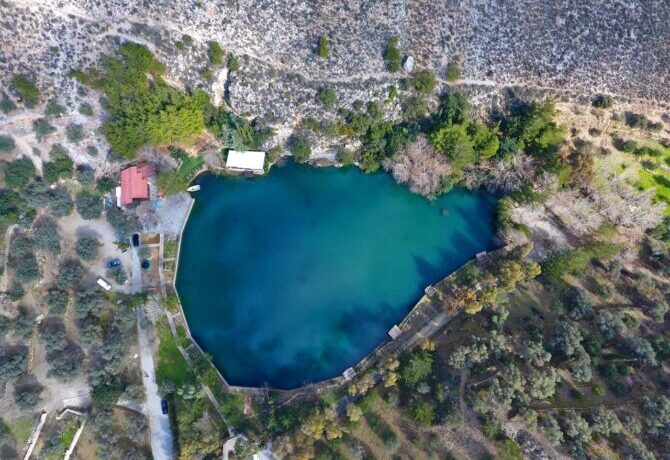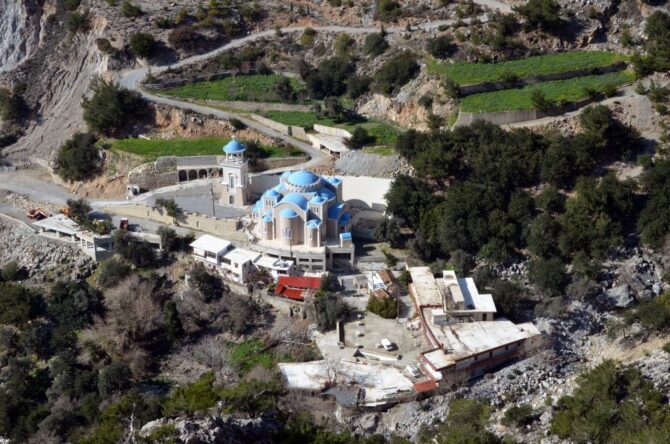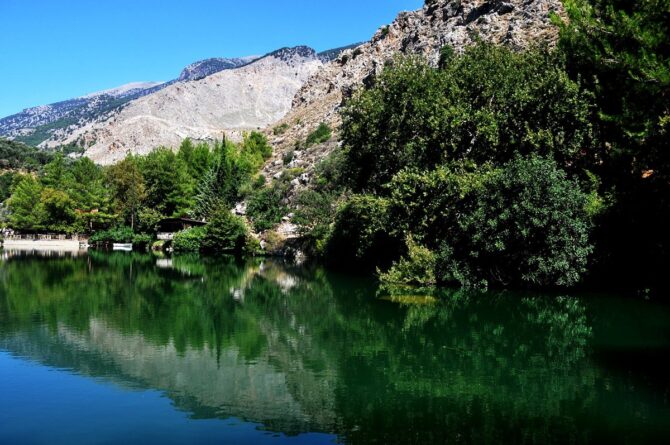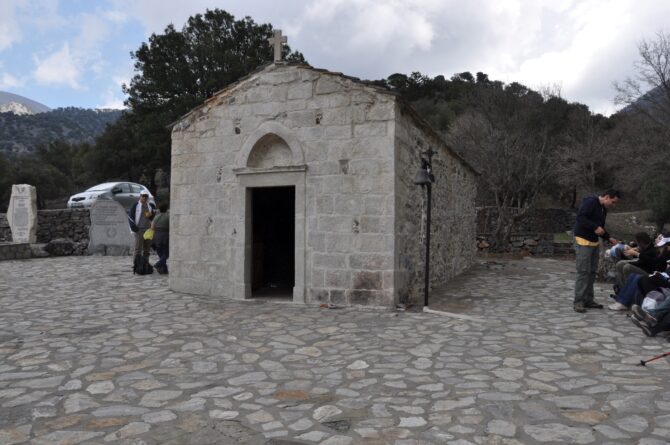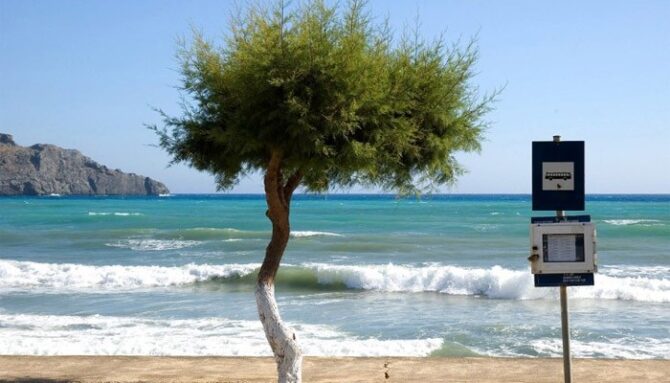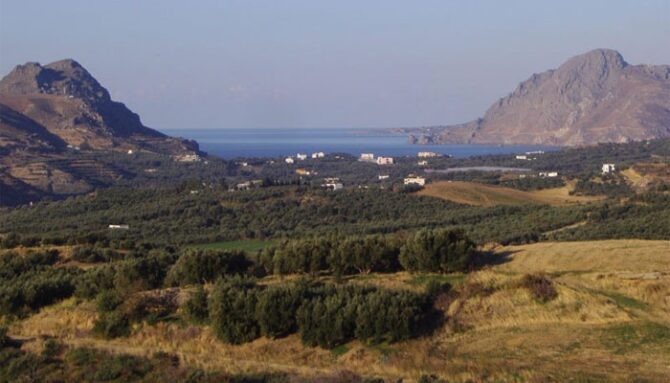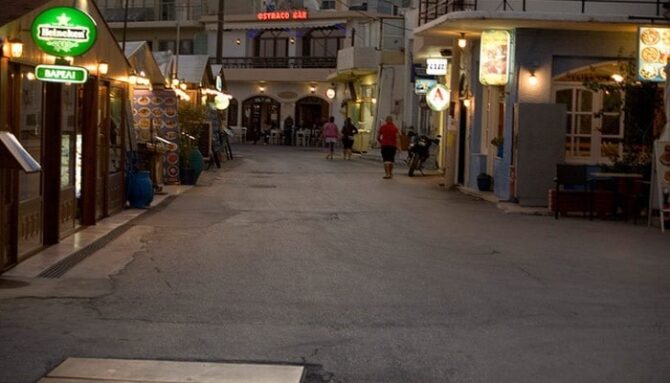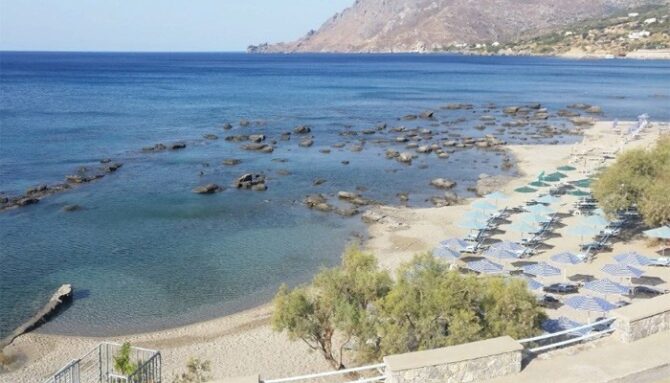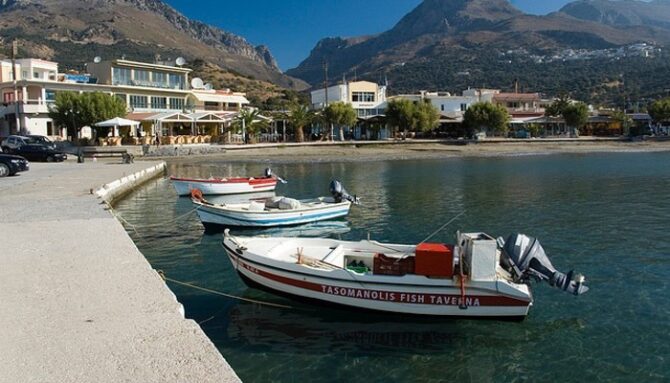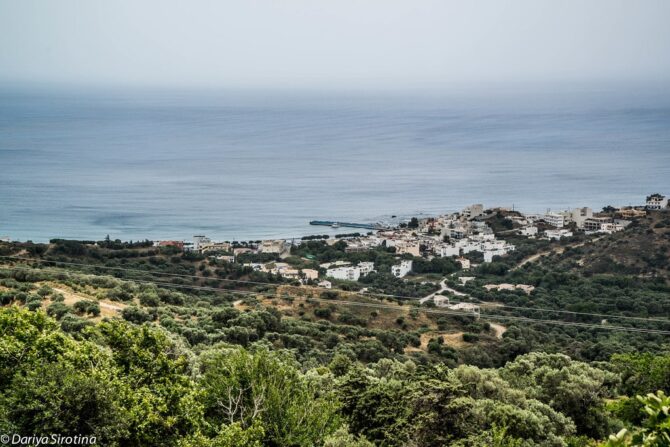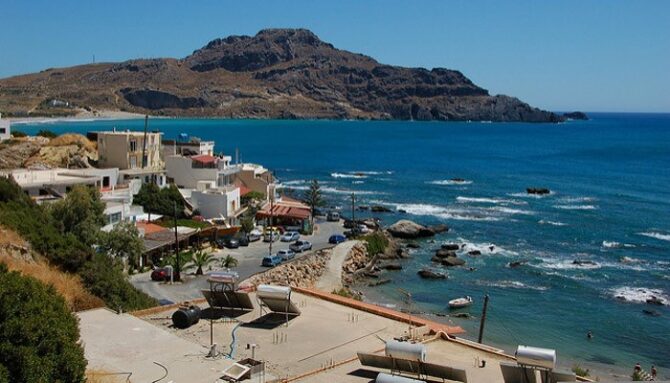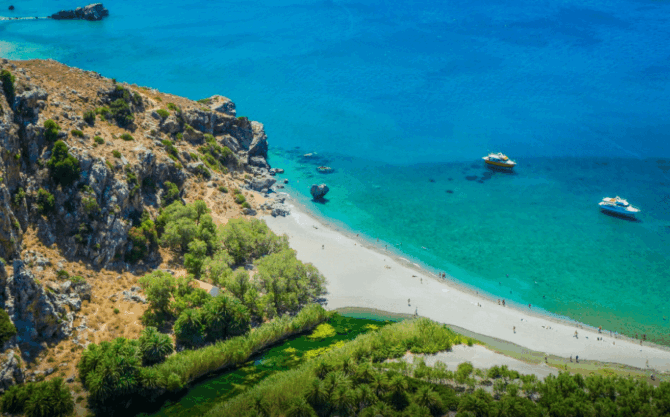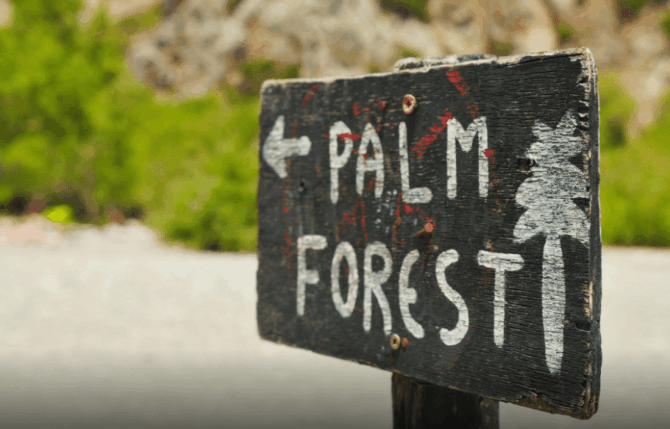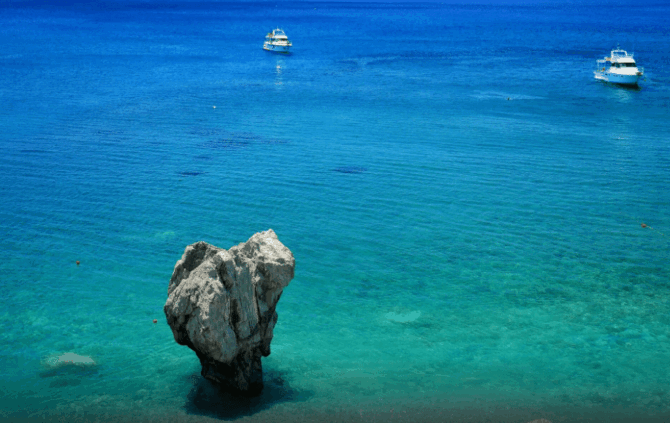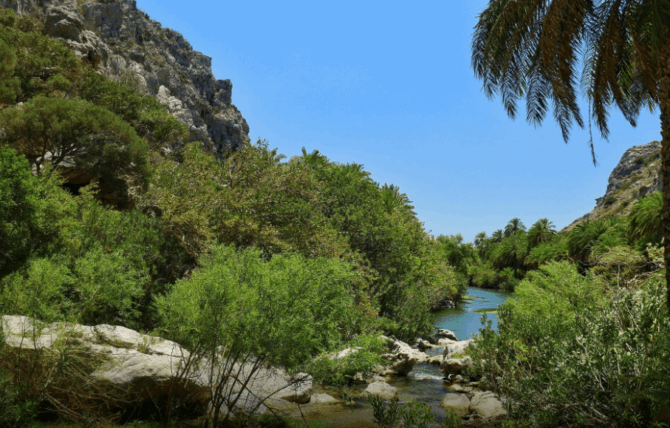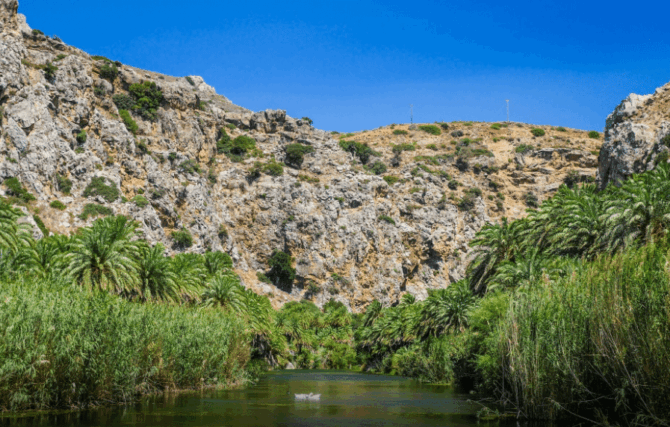The amazingly beautiful resort town of Agia Galini is part of the rethymnon city. From the sea, it looks like snow-white pearls scattered along the rocky shores. Many legends and local legends are associated with this place. The atmosphere of the town is conducive to romance in its most refined sense. Today it is a popular resort with a lot of interesting attractions. Fashionable hotels, taverns and restaurants with exquisite cuisine make up its infrastructure. In the hotel complexes will help to rent a car or tell you the best route for an independent trip to the historical places of Crete.
Attractions Agia Galini on map
Paximadia Islands
Two small uninhabited islets are located in the Gulf of Messara. The distance from Agia Galini is 12 km. From the shore it seems that this is one island, so close to each other they are located. But, swimming closer, it turns out that they are separated by a narrow strait. Several legends are associated with Paximadya. One of them tells that it was here, and not on Delos, that Apollo and Artemis were born. Another tells of Daedalus, who first built the Labyrinth of Knossos and was later exiled by Minos to these uninhabited lands.
In ancient times, the islands were considered the fiefdom of Dionysus and the goddess Leto. They were worshipped in Festus. The name Paximadya was given in honor of the ritual barley cracker, which in shape resembled the outlines of the islands. The zone is under the protection of the European Union, but you can get here by rented boat. The terrain is absolutely wild. On the south side there is an amazingly beautiful beach, with clear water and a pebble bottom. It is surrounded by beautiful cliffs overgrown with mountain vegetation. Sometimes there are sheep. Here you can make an amazing photo shoot against the background of the turquoise sea, mountains, rocky shores.
Address: Agia Galini, Crete, Greece
Church of Ecclisia Tessaron Martyron
Almost in the center of the city is Ekklicia Tessarón Martyron. The church was founded in honor of the four martyrs Angelis, Manuel, George and Nicholas, who were defenders of the Orthodox faith during the Turkish occupation. They were not afraid to accept a painful death and after death became the real heroes of Crete. Since the events took place in Rethymnon, it is logical that temples in their honor are being built throughout the region.
It is not the architecture of the church that is of interest. It was built in the Greek tradition, has one nave, a small farmstead surrounded by a stone fence. The very concept of Ecclesia is interesting. Even at the very beginning of the birth of Christianity, many movements arose that interpret the concept of the Temple of God in their own way. Ecclesia cannot be called a church in the literal sense of the word. Rather, it is a gathering of sincere believers in Christ who come to the temple to communicate with the creator. Near the building there is a parking lot where you can leave the car and go inside to pray.
Address: Agia Galini, Rethymnon City, Crete, Greece
Dedalos Cave
The name of Daedalus is associated not only with the islands of Paximadia. It is believed that the cave, located in the northern part of Agioi-Galini, was at one time a prison for the great ancient master and his son Icarus. After Daedalus built the Palace of Knossos, the cunning Minos imprisoned him in this cave. The ruler did not want the master to erect similar splendor for another king. It was in this cave that the ancient inventor made wings for himself and his son. He himself managed to fly away from the dungeon, and his son died approaching the Sun. This myth is known to everyone from a young age.
As for the cave, today hardly anyone can confirm or deny the history of the imprisonment of Daedalus here, in Agioi-Galini. The place is included in one of the tourist routes, which can be ordered at the tour desk. Many local hotels will help you find a guide or join a tour group. In any case, it is recommended to visit the Cave of Daedala as an introductory hike through historical sites.
Address: Northwestern District of Agia Galini, Crete, Greece
Matala Beach
The town is very conveniently located. From its hills it is easy to see the nearby sights, and even better to take a car and personally visit them. The accommodation is 28 km from Matala Beach. This is a half-hour drive and a lot of impressions from the world-famous place. The peak of its popularity fell on the mid-60s of the last century. On the coast there is a rock of white limestone, all dotted with caves. In the Neolithic era, people lived in them, in the Minoan period they were used for ritual purposes, at the beginning of the new era they were turned into a burial ground. Then the caves were cleaned up and for a long time they were forgotten, until in the 60s of the twentieth century, hippies appeared on the coast. Flower children chose the mountain and gave it a second life, creating a community here. The caves were visited by Janis Joplin, Bob Dylan, members of the Rolling Stones and many other interesting people. Then the locals expelled the hippies from the caves, cleaned them up again and created a tourist site. You can visit the dwellings of the Neolithic era for 2 euros. In addition, the beach has excellent conditions for recreation. Hotels, taverns and bars have been built along the coast. At dinner, guests not only order their favorite Dishes of Cretan cuisine, but also watch the sunset.
Address: Matala village, Crete, Greece
Festus Palace
The Palace of Festus is another attraction that is visible from Agia Galini. The distance by road is only 19 km. Excavations of the complex in Phaistos began simultaneously with the research of the Palace of Knossos. But the second was given more attention because of its vast territory. Therefore, the Palace of Festus remained in ruins, while its more fortunate counterpart turned into a work of architectural art. But the ruins of Fest are no less impressive. There are enough places for memorable photo shoots that can be held against the background of stone stairs, in the royal chambers, the upper or western courtyard.
The history of Phaistos begins in the late Neolithic era. It was then that a new city appeared on the coast of Crete with its own harbor, money and a king. In the Minoan period, it became a major administrative center of the island, but in 1450 BC. residents unexpectedly left the territory of the palace and settled nearby. The royal choirs gradually collapsed, and Phaistos continues to live to this day. Today it is a small resort town with a good tourist infrastructure. There are good hotels here, where you can book a room for the night to start an unforgettable tour of the Festus Palace in the morning. Entrance fee – 4 euros.
Address: Festus, Crete, Greece
Gortina
After exploring ancient Phaistos, you can continue on to an equally interesting archaeological site – the ancient city of Gortyn. It was once the largest centre on the coast of Crete. Even Gomer mentioned him in his works, calling him “strong-walled.” In 1884, it was discovered by archaeologist Halbherr. He found stone columns and the legal laws embossed on them. Studies of the territory continue to this day, surprising historians with new discoveries. Ancient monuments, buildings, statues, utensils and engineering networks were found, telling about the culture and life of the city.
It is believed that Gortyn is more than 6 thousand years old. For 4 euros here you can see several temples, amphitheaters, the acropolis, the residence of the praetor, the evergreen plane tree, with which the ancient Greek myth of the abduction of Europe is associated. The area is characterized by a layering of cultures of different eras. Near the ancient sanctuaries there are Christian temples. By the way, the first church in Crete was built here. The working hours of the historical and archaeological center are from 8.00 to 20.00.
Address: Gortyn, Crete, Greece
Zaros Village
For those who are interested in the original culture of Crete, it is recommended to visit the mountain village of Zaros. It is next to the Festus Palace (30 minutes’ drive) on the edge of the Ruvas Forest. In the center there is a drinking fountain. The village is famous for its water. A five-minute drive away is The Lake of Votamos, where locals breed trout, ducks settle on the shores, and nature itself has to rest. Such small villages are usually famous for their cuisine. The taverns serve delicious meals prepared with fresh ingredients. In the shops you can buy olive oil, honey, cheese and sweets.
A hiking trail is laid through the Ruvas Forest. The trail starts from the gorge of St. Nikolaos, passes through the monastery of St. Nicholas and leads to the church of St. John. Along the way there are water mills, in Zaros there are about ten of them. A magnificent church of St. Kyriaki was built in the village, and a museum was opened next to it. A century-old oak tree grows in the central square, and under it stands a giant bell, against which tourists like to take memorable photos. Agia Galini is an hour’s drive from Zaros. Hotels in the village have received high marks from travelers.
Address: Zaros village, Heraklion, Greece, Crete
Plakias Village
No less authentic place is the coastal village of Plakias. It is comfortably located in a bay on the coast of the Libyan Sea. Different eras echo here, on the streets there are the remains of Roman aqueducts, which look especially romantic against the background of modern snow-white houses. At the top of the mountain above the village rises the church of Ecclesias Panagia. In the village itself there are several ancient temples that are worth a visit. Over the southern part of the beach hang steep cliffs. They are associated with one of the most interesting natural phenomena. One of the rocks is so flat and smooth that it reflects the sun. In autumn and early winter, the light attracts squid and then their real invasion begins. Locals do not waste time and are engaged in squid fishing.
In the vicinity is the monastery of Preveli. It was founded in the 16th century under the rule of the Venetians. On the bell tower of the main temple there is an inscription of 1594. This date is considered the birthday of the monastery. The Cretan monastic brotherhood has always advocated the reunification of the island with Greece. This was prevented by the Turkish occupation, as a result of which the monastery was destroyed. It was restored more than once. The Fascist German invaders destroyed the monastery, punishing the monks for their help to the partisan movement and saving 5,000 soldiers of the Allied armies from captivity. A museum has been opened at the monastery, which outlines the heroic history of Cretan Christianity. The library contains exclusive manuscripts, old editions, more than a thousand volumes of theistic literature.
Address: Plakias Village, Crete, Greece
Preveli Beach
Two and a half kilometers from the monastery is the amazing beauty of the beach of Preveli. The road to it leads through the palm forest, and the coast itself is planted with luxurious palm trees. The uniqueness of the beach lies in the fact that vacationers have a choice – to swim in fresh water or in salt water. The sand and pebble area is located at the mouth of the mountain river Megalo. Here it forms a small lagoon, convenient for relaxing with small children. From Agia Galini it is best to get here by rented or pleasure boat.
Address: Preveli Beach, Crete, Greece

